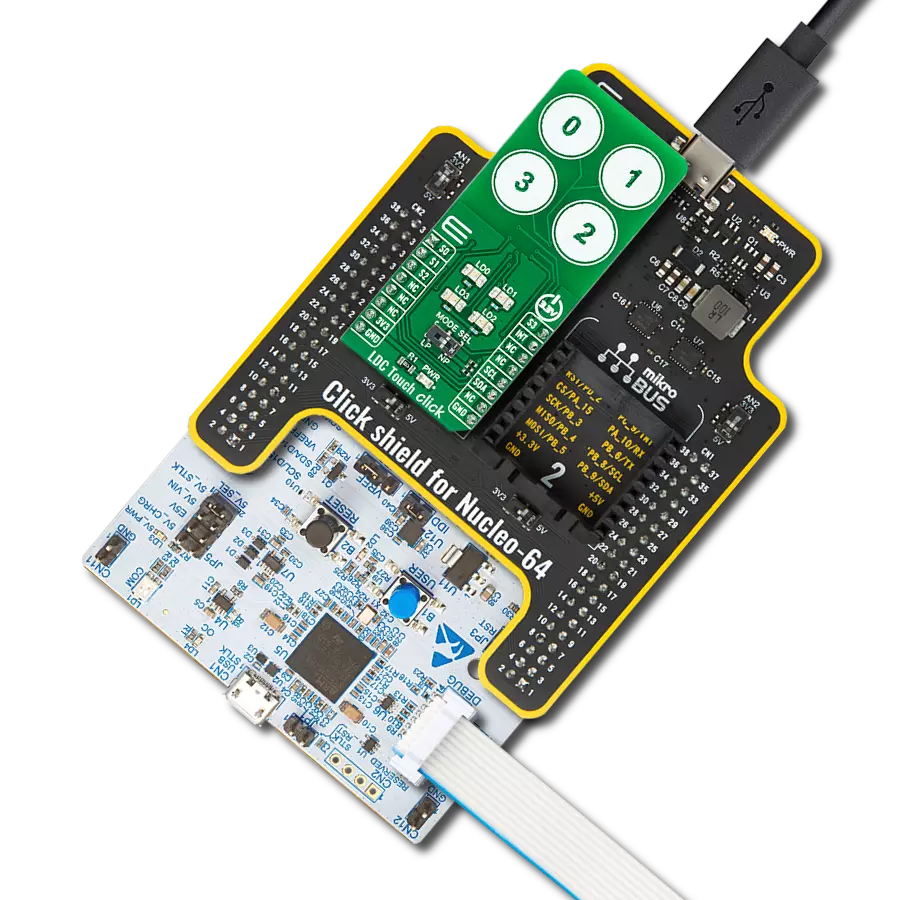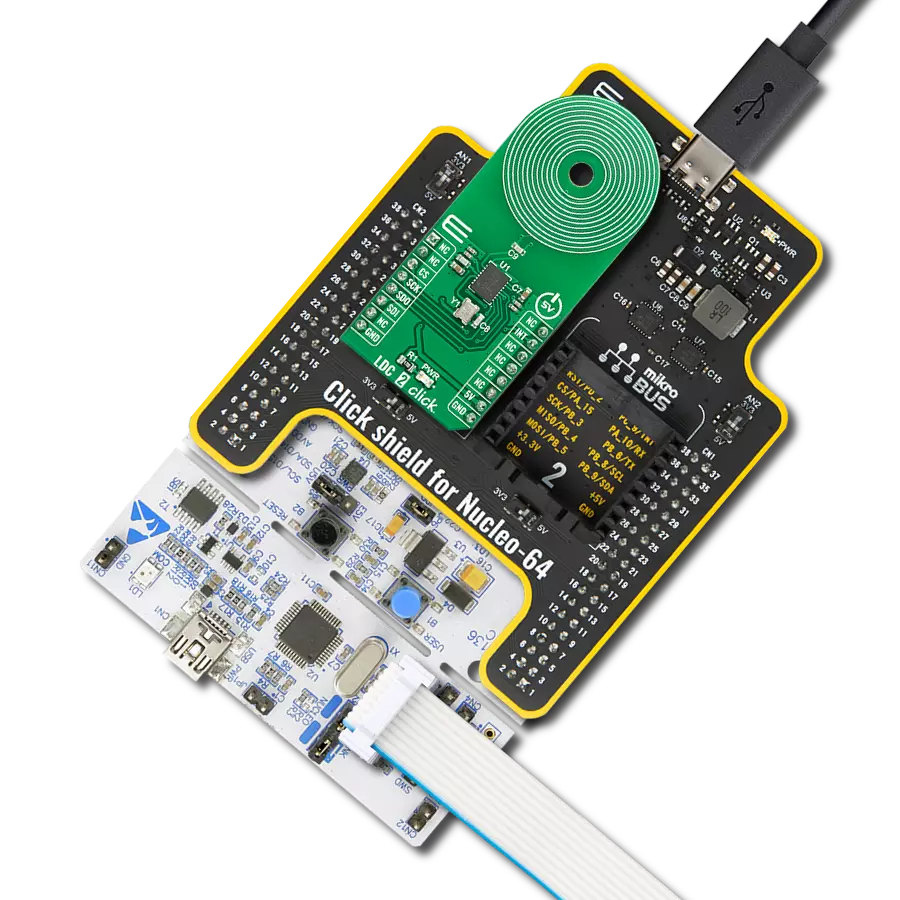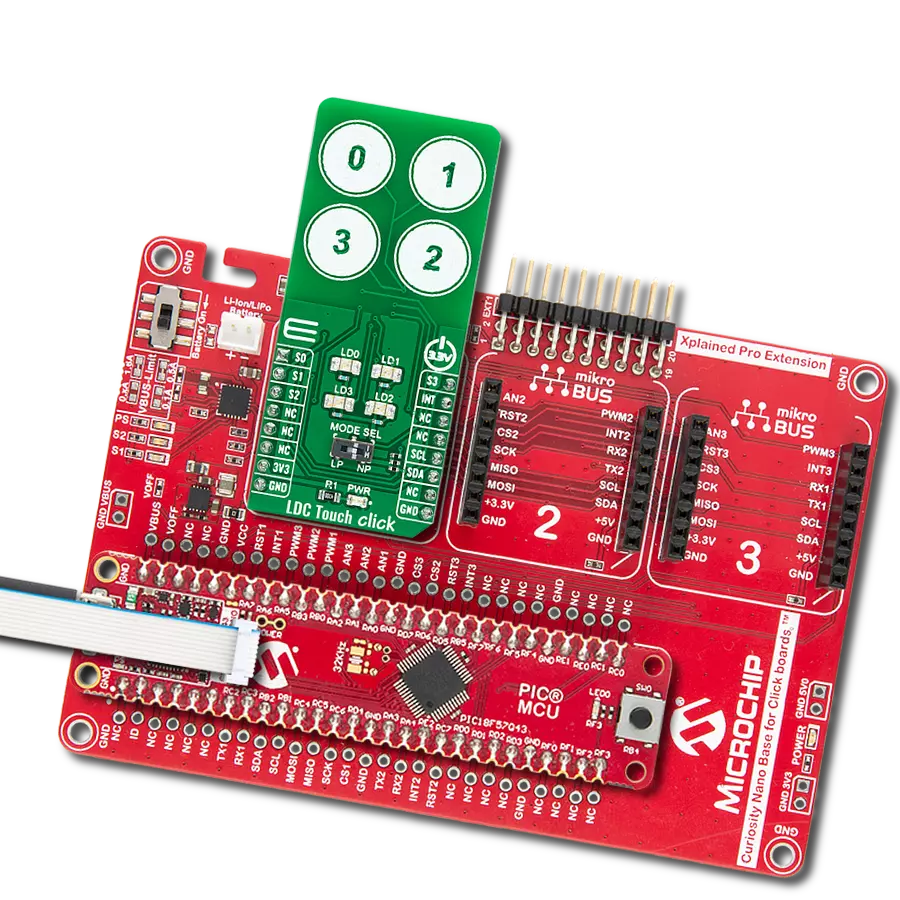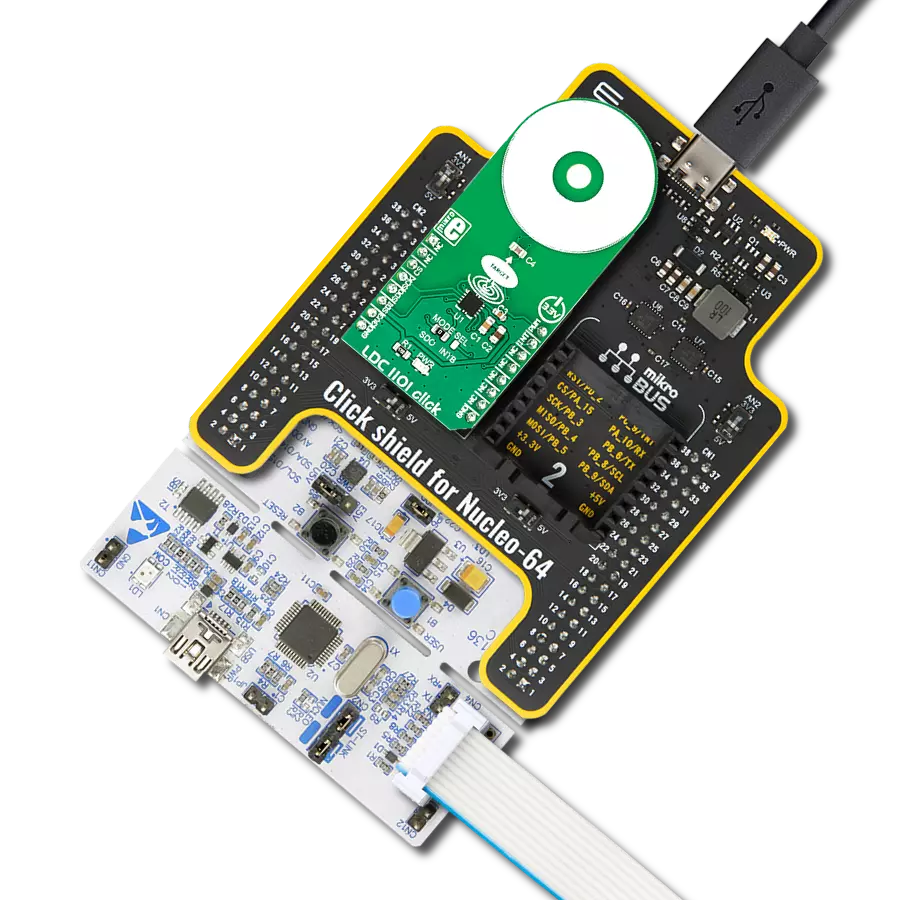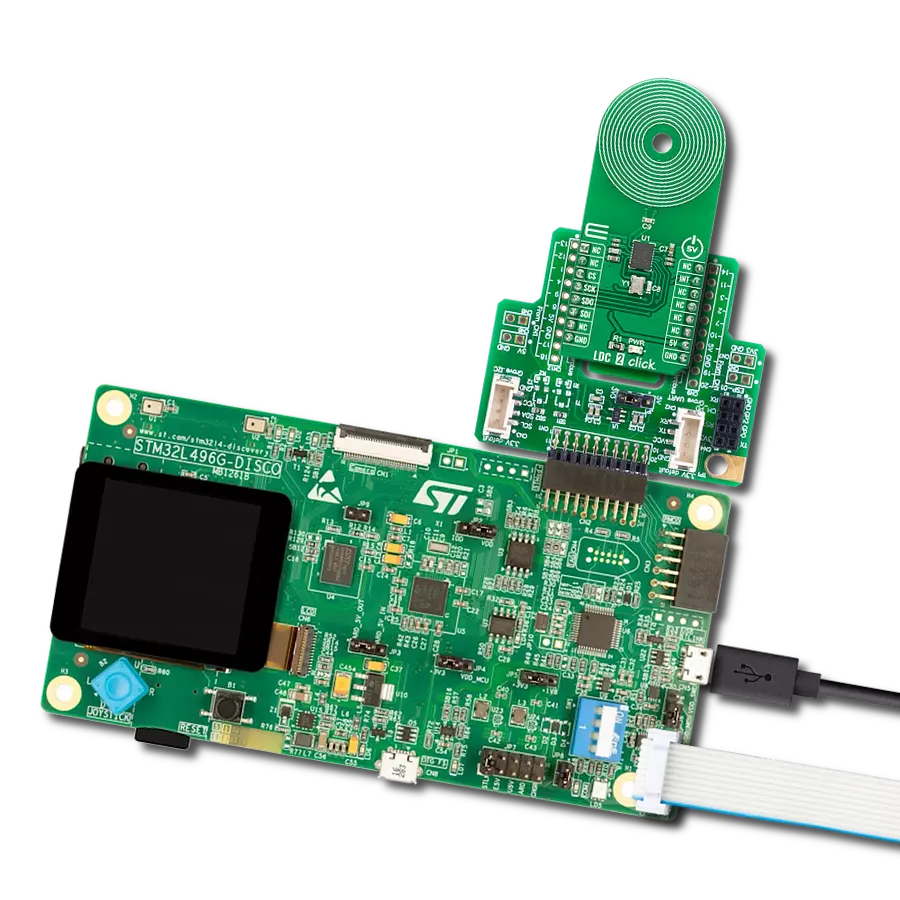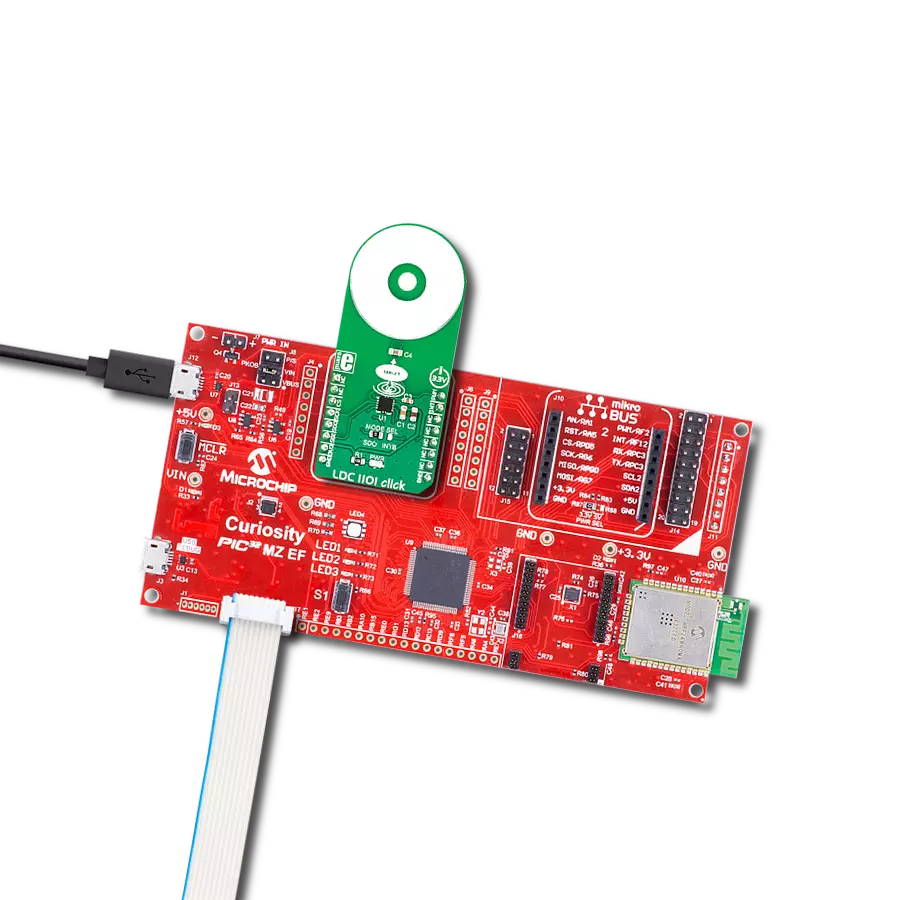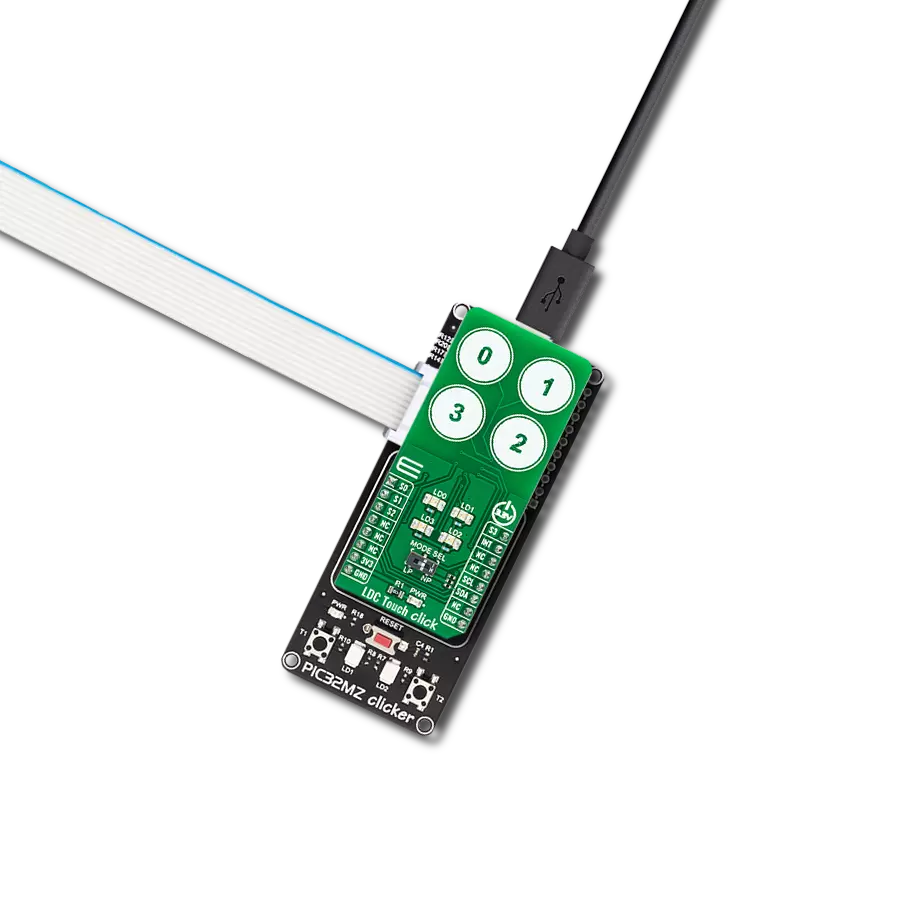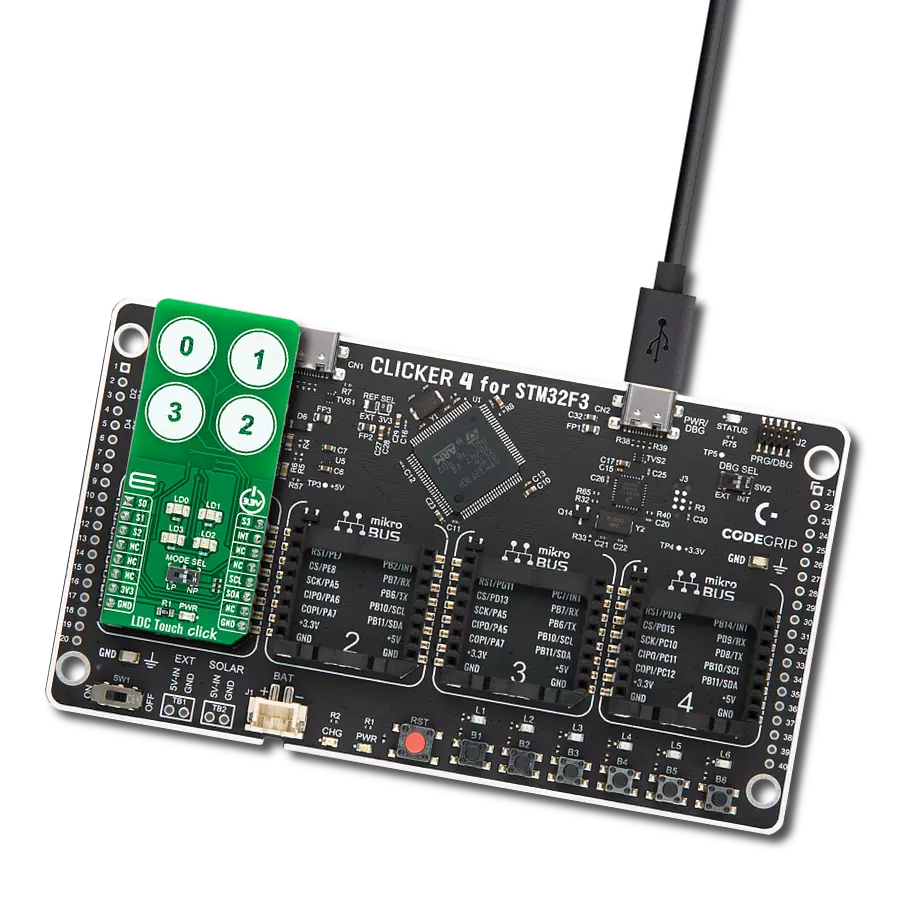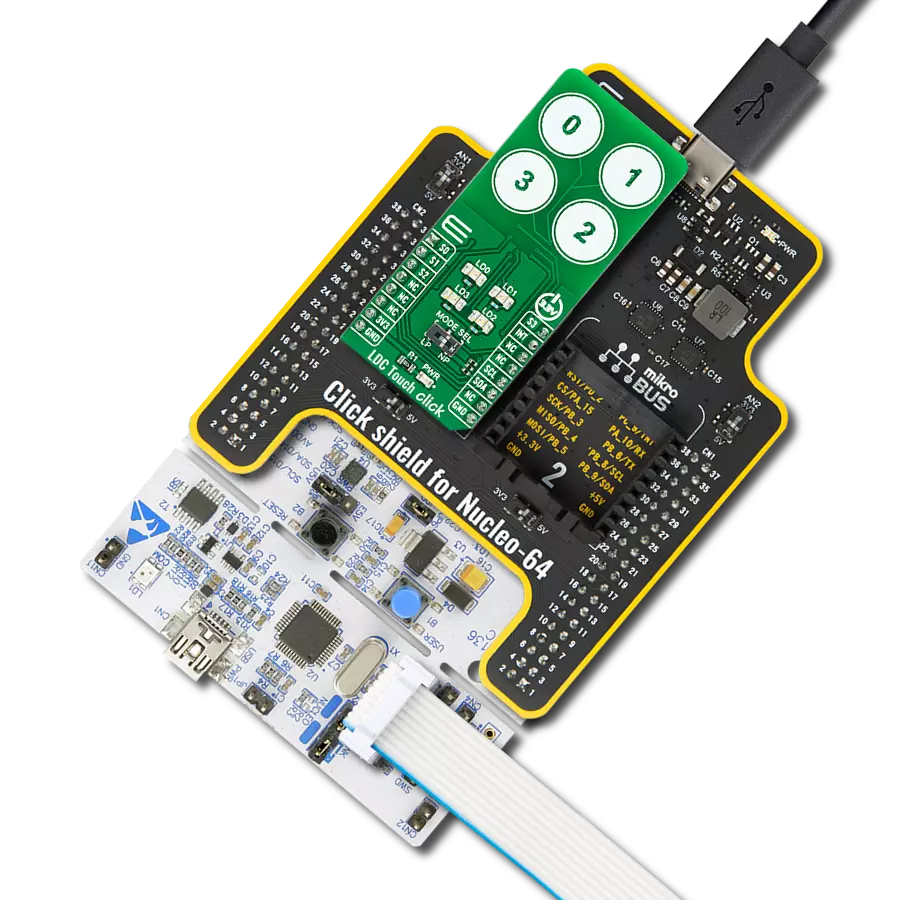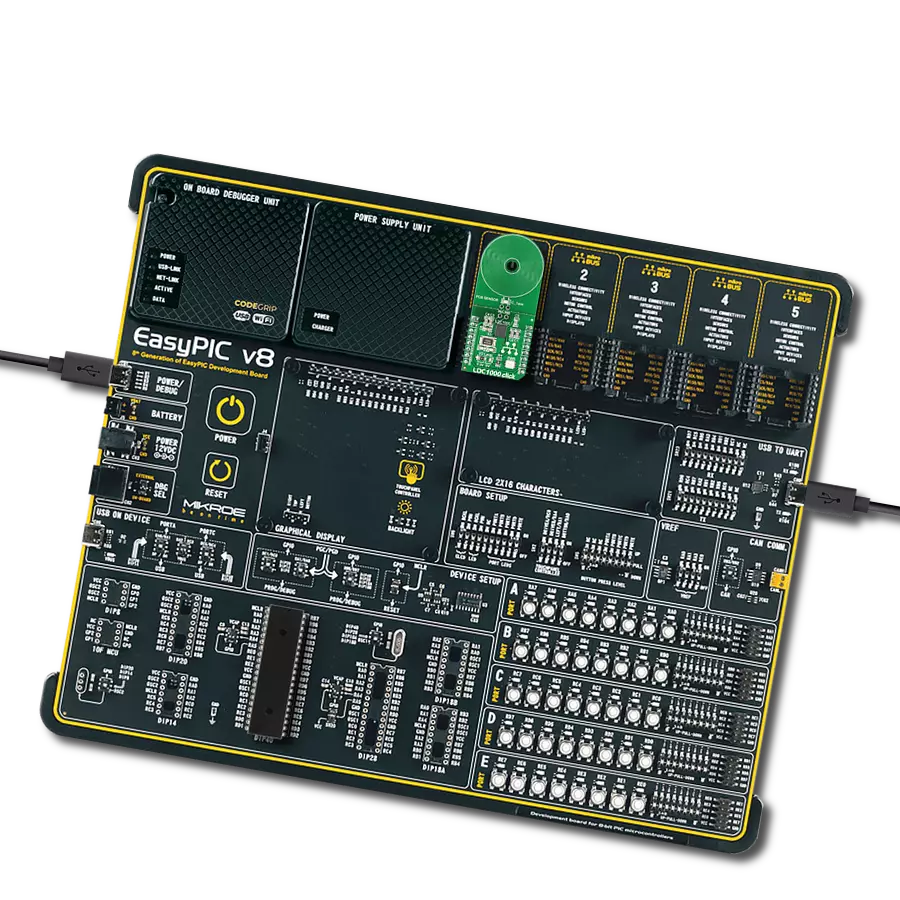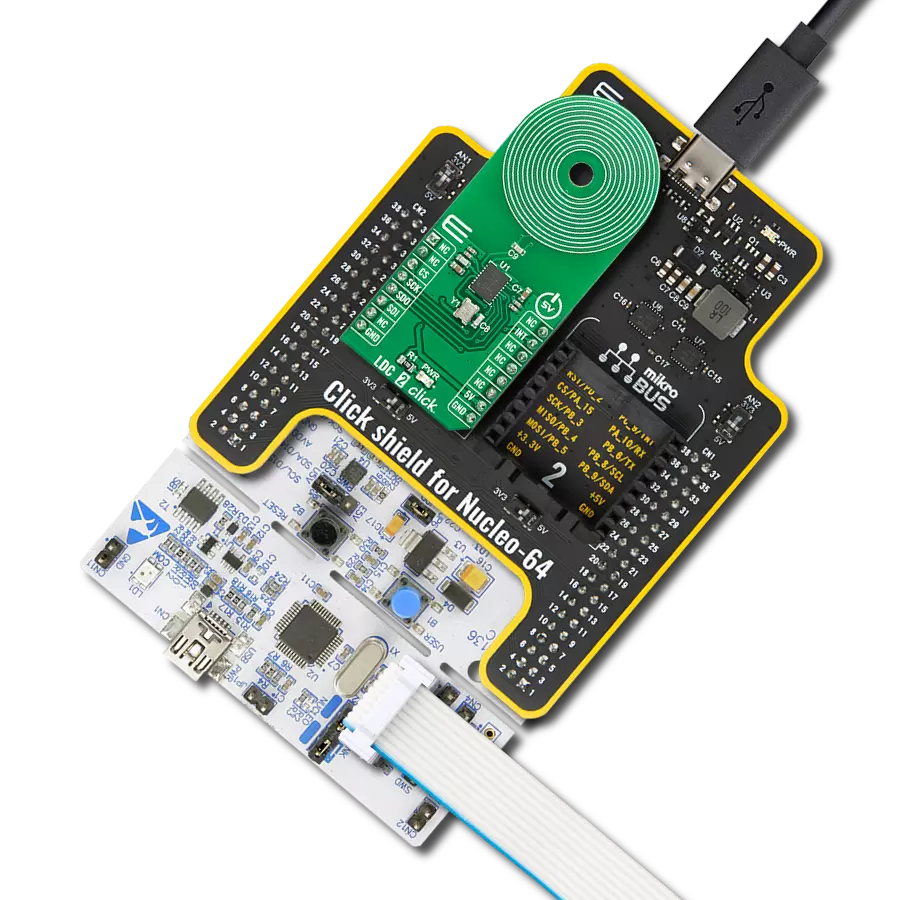Accurately measure the inductance change caused by the presence or movement of conductive targets within its magnetic field
A
A
Hardware Overview
How does it work?
LDC1000 Click is based on the LDC1000, a low-power inductance-to-digital converter from Texas Instruments. The LDC1000 simultaneously measures an LC resonator's impedance and resonant frequency by regulating the oscillation amplitude in a closed-loop configuration to a constant level while monitoring the energy the resonator dissipates. By monitoring the amount of power injected into the resonator, the LDC1000 can determine the impedance value and return it as a digital value. In addition, the LDC1000 can also measure the oscillation frequency of the LC circuit, used to determine the inductance of the LC circuit, also given in a digital format. The LDC1000 has a sub-micron resolution in short-range applications suitable for precise short-range measurements of conductive targets' position, motion, or composition. This Click board™ comes with a
detachable sensor (an LC tank comprising a 36-turn PCB coil and a 100pF 1% NPO capacitor). The LDC measures the inductance change that a conductive target causes when it moves into the inductor's AC magnetic field to provide information about the target's position over a sensor coil. The inductance shift is caused by eddy currents (circulating currents) generated in the target due to the sensor's magnetic field. These currents make a secondary magnetic field that opposes the sensor field, causing a shift in the observed inductance, used for precise positioning of the target as it moves laterally over the sensor coil. The LDC1000 communicates with MCU using the standard SPI serial interface with a maximum frequency of 4MHz. It also has an interrupt pin routed to the INT pin of the mikroBUS™ socket, which can be configured in three different ways by programming
the interrupt mode register. An interrupt pin can act as a proximity switch with programmable hysteresis, a wake-up feature, or a data-ready pin indicating a valid condition for new data availability. Inductive sensing of this LDC is highly reliable where harsh conditions don't hinder the performance of LDC1000. Alongside the detachable sensor, the onboard INA and INB pins allow you to replace the provided sensor and solder your own. This Click board™ can operate with either 3.3V or 5V logic voltage levels selected via the I/O level jumper. This way, both 3.3V and 5V capable MCUs can use the communication lines properly. However, the Click board™ comes equipped with a library containing easy-to-use functions and an example code that can be used, as a reference, for further development.
Features overview
Development board
Arduino UNO is a versatile microcontroller board built around the ATmega328P chip. It offers extensive connectivity options for various projects, featuring 14 digital input/output pins, six of which are PWM-capable, along with six analog inputs. Its core components include a 16MHz ceramic resonator, a USB connection, a power jack, an
ICSP header, and a reset button, providing everything necessary to power and program the board. The Uno is ready to go, whether connected to a computer via USB or powered by an AC-to-DC adapter or battery. As the first USB Arduino board, it serves as the benchmark for the Arduino platform, with "Uno" symbolizing its status as the
first in a series. This name choice, meaning "one" in Italian, commemorates the launch of Arduino Software (IDE) 1.0. Initially introduced alongside version 1.0 of the Arduino Software (IDE), the Uno has since become the foundational model for subsequent Arduino releases, embodying the platform's evolution.
Microcontroller Overview
MCU Card / MCU

Architecture
AVR
MCU Memory (KB)
32
Silicon Vendor
Microchip
Pin count
28
RAM (Bytes)
2048
You complete me!
Accessories
Click Shield for Arduino UNO has two proprietary mikroBUS™ sockets, allowing all the Click board™ devices to be interfaced with the Arduino UNO board without effort. The Arduino Uno, a microcontroller board based on the ATmega328P, provides an affordable and flexible way for users to try out new concepts and build prototypes with the ATmega328P microcontroller from various combinations of performance, power consumption, and features. The Arduino Uno has 14 digital input/output pins (of which six can be used as PWM outputs), six analog inputs, a 16 MHz ceramic resonator (CSTCE16M0V53-R0), a USB connection, a power jack, an ICSP header, and reset button. Most of the ATmega328P microcontroller pins are brought to the IO pins on the left and right edge of the board, which are then connected to two existing mikroBUS™ sockets. This Click Shield also has several switches that perform functions such as selecting the logic levels of analog signals on mikroBUS™ sockets and selecting logic voltage levels of the mikroBUS™ sockets themselves. Besides, the user is offered the possibility of using any Click board™ with the help of existing bidirectional level-shifting voltage translators, regardless of whether the Click board™ operates at a 3.3V or 5V logic voltage level. Once you connect the Arduino UNO board with our Click Shield for Arduino UNO, you can access hundreds of Click boards™, working with 3.3V or 5V logic voltage levels.
Used MCU Pins
mikroBUS™ mapper
Take a closer look
Click board™ Schematic

Step by step
Project assembly
Software Support
Library Description
This library contains API for LDC1000 Click driver.
Key functions:
ldc1000_get_proximity_data- This function reads the proximity dataldc1000_get_inductance_data- This function reads the inductance dataldc1000_get_int_input- This function reads the input voltage from the INT pin
Open Source
Code example
The complete application code and a ready-to-use project are available through the NECTO Studio Package Manager for direct installation in the NECTO Studio. The application code can also be found on the MIKROE GitHub account.
/*!
* \file
* \brief Ldc1000 Click example
*
* # Description
* This example showcases how to initialize and configure the logger and Click modules and
* read and display proximity and impendance data.
*
* The demo application is composed of two sections :
*
* ## Application Init
* This function initializes and configures the logger and Click modules. Configuration data
* is written to the: rp maximum/minimum, sensor frequency, LDC/Clock/Power registers.
*
* ## Application Task
* This function reads and displays proximity and impendance data every 10th of a second.
*
* \author MikroE Team
*
*/
// ------------------------------------------------------------------- INCLUDES
#include "board.h"
#include "log.h"
#include "ldc1000.h"
// ------------------------------------------------------------------ VARIABLES
static ldc1000_t ldc1000;
static log_t logger;
static uint16_t old_proximity;
// ------------------------------------------------------ APPLICATION FUNCTIONS
void application_init ( )
{
log_cfg_t log_cfg;
ldc1000_cfg_t cfg;
old_proximity = 0;
/**
* Logger initialization.
* Default baud rate: 115200
* Default log level: LOG_LEVEL_DEBUG
* @note If USB_UART_RX and USB_UART_TX
* are defined as HAL_PIN_NC, you will
* need to define them manually for log to work.
* See @b LOG_MAP_USB_UART macro definition for detailed explanation.
*/
LOG_MAP_USB_UART( log_cfg );
log_init( &logger, &log_cfg );
log_info( &logger, "---- Application Init ----" );
// Click initialization.
ldc1000_cfg_setup( &cfg );
LDC1000_MAP_MIKROBUS( cfg, MIKROBUS_1 );
ldc1000_init( &ldc1000, &cfg );
Delay_ms ( 100 );
ldc1000_default_cfg( &ldc1000 );
Delay_ms ( 100 );
}
void application_task ( )
{
uint16_t proximity;
float inductance;
proximity = ldc1000_get_proximity_data( &ldc1000 );
inductance = ldc1000_get_inductance_data( &ldc1000 );
if ( ( ( proximity - old_proximity ) > LDC1000_SENSITIVITY ) &&
( ( old_proximity - proximity ) > LDC1000_SENSITIVITY ) )
{
log_printf( &logger, " * Proximity: %d \r\n", proximity );
log_printf( &logger, " * Impendance: %f uH\r\n", inductance );
old_proximity = proximity;
log_printf( &logger, "--------------------\r\n" );
Delay_ms ( 100 );
}
}
int main ( void )
{
/* Do not remove this line or clock might not be set correctly. */
#ifdef PREINIT_SUPPORTED
preinit();
#endif
application_init( );
for ( ; ; )
{
application_task( );
}
return 0;
}
// ------------------------------------------------------------------------ END
Additional Support
Resources
Category:Inductance



















